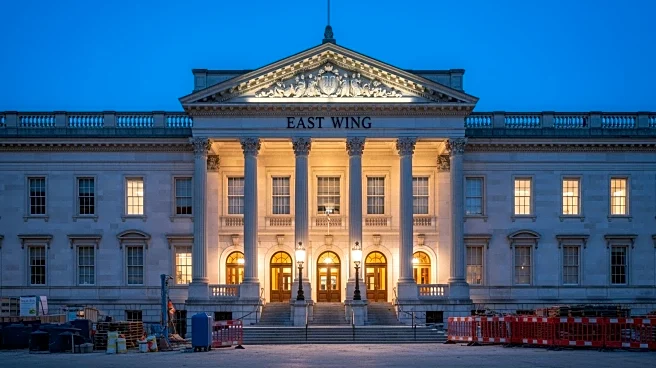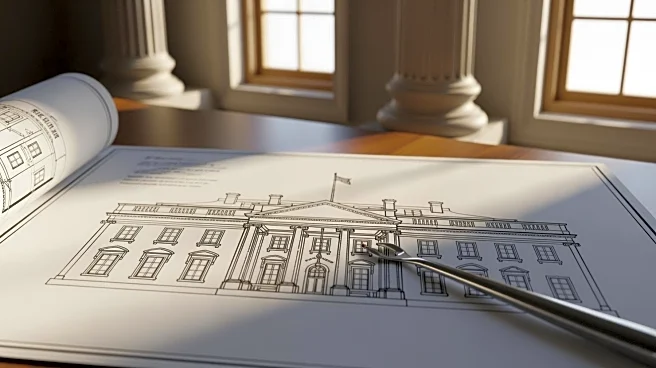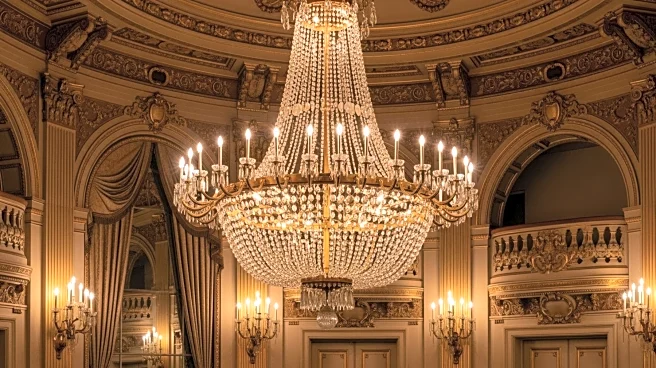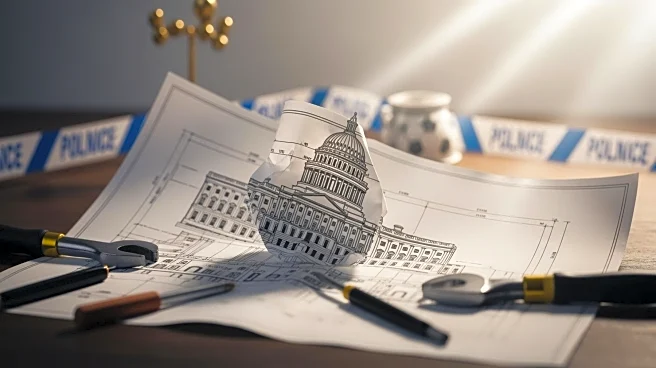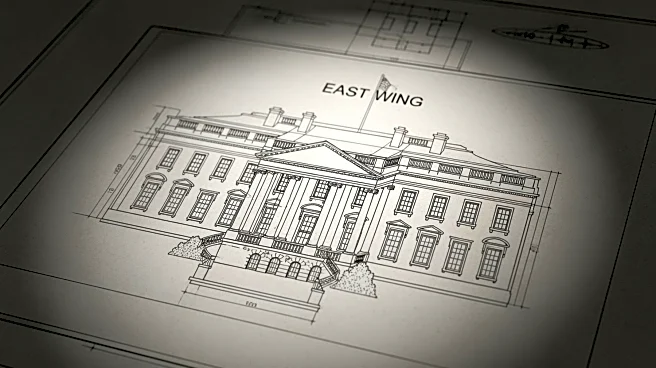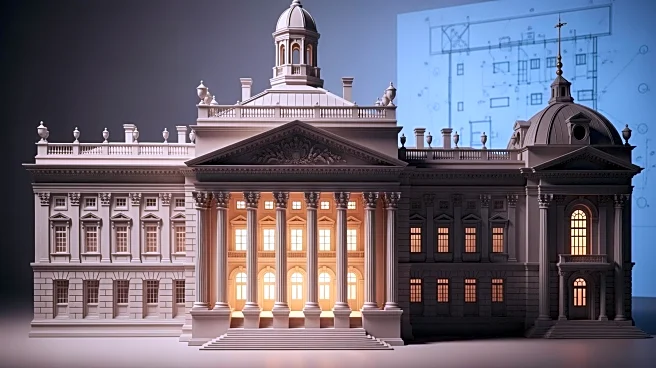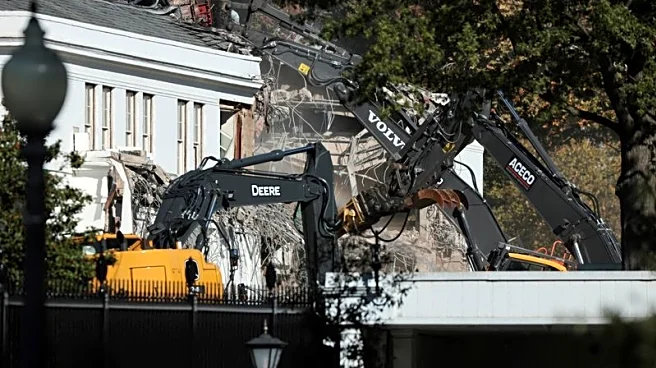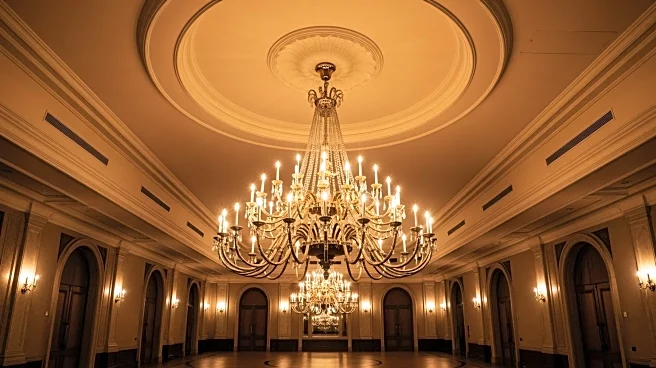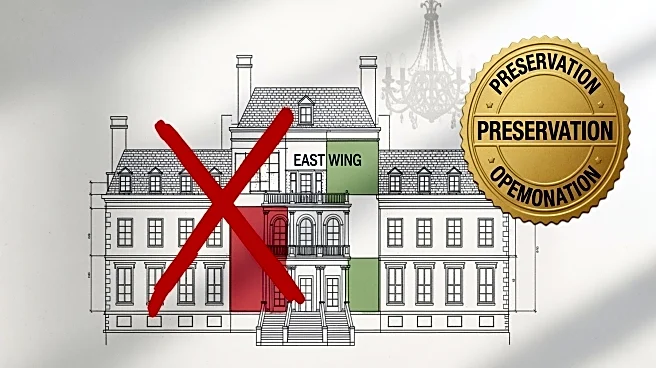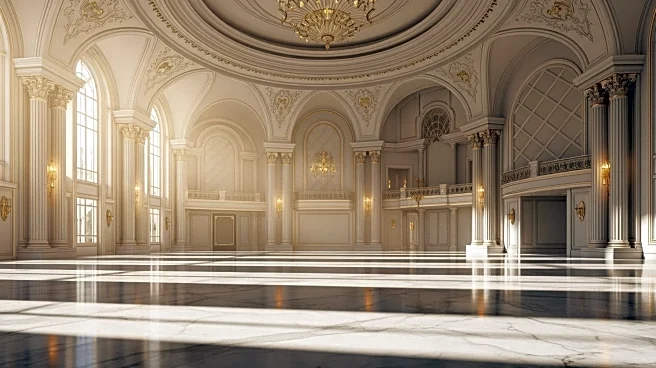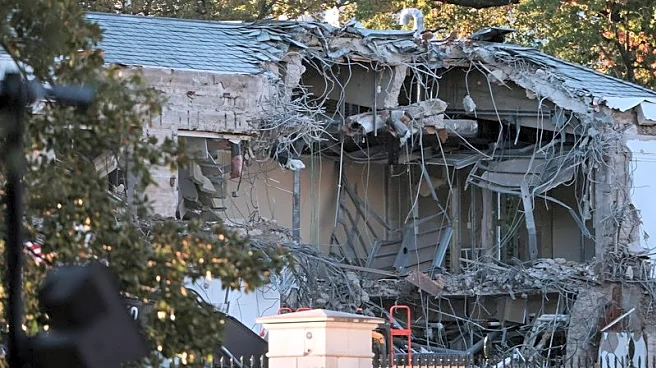What's Happening?
President Donald Trump has commenced the demolition of the White House East Wing to construct a new $250 million ballroom. The demolition, which began on Monday, is part of Trump's broader renovation plans
for the White House. This project has sparked criticism from politicians and preservationists, despite the White House's assurance that it is privately funded. The new ballroom is set to be the first major change to the White House's exterior since 1942. The National Trust for Historic Preservation and other architectural groups have expressed concerns about the project's scale and lack of public consultation.
Why It's Important?
The demolition and subsequent construction of a new ballroom at the White House have significant implications for historical preservation and public transparency. Critics argue that the project could overwhelm the historic site, given the ballroom's planned size compared to the main White House building. The lack of public consultation and transparency about funding sources has raised questions about accountability. This development highlights the tension between modernization efforts and the preservation of national heritage sites, with potential long-term impacts on how such projects are managed in the future.
What's Next?
As the demolition progresses, there may be increased scrutiny from preservation groups and the public. The National Trust for Historic Preservation has called for a pause in the demolition to allow for a public review process. The White House may face pressure to provide more transparency regarding the project's funding and to engage with preservation experts. The outcome of this project could set a precedent for future renovations of historic government buildings, influencing how such projects are approached and executed.
Beyond the Headlines
The decision to proceed with the demolition without extensive public consultation raises ethical questions about the stewardship of national heritage sites. The project could lead to a reevaluation of the processes and regulations governing renovations of historic buildings, potentially prompting legislative changes to ensure greater oversight and public involvement in future projects.
